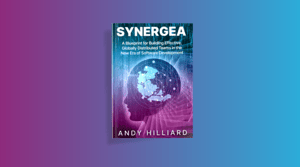Accelerance Blog
Best Practices
March 24, 2025 | Accelerance Research Team
Maximizing Offshore Engagements with Artificial Intelligence
Best Practices
March 21, 2025 | Accelerance Research Team
The Cloud, the Capital, and the Culture: Three Tips for Collaboration with Your Offshore Team
Best Practices
March 20, 2025 | Accelerance Research Team
Managing Risk in Offshore Development
Best Practices
March 19, 2025 | Accelerance Research Team
Disconnects with Offshore Teams and How to Avoid Them
Best Practices
March 18, 2025 | Accelerance Research Team
Synchronizing Your In-House and Offshore Teams
Best Practices
March 17, 2025 | Accelerance Research Team
Beyond Hourly Rates: The True Cost of Offshore Software Development
Blog
January 16, 2025 | Accelerance Research Team
Tech Talent Shortage Part 2: Five Cutting-Edge Technologies to Adopt
Best Practices
January 7, 2025 | Accelerance Research Team
Tech Talent Series Part 1: How the Tech Talent Shortage Could Derail Your Plans for Emerging Tech
Blog
October 16, 2024 | Rich Wanden
Software Outsourcing in EMEA looks to Regain Ground
Blog
October 9, 2024 | Andy Hilliard
Learn the history of outsourcing from Accelerance
Blog
September 27, 2024 | Andy Hilliard
The Benefits of Nearshore Software Development
Blog
September 12, 2024 | Andy Hilliard
We Are Here to Help: Machine Learning and Public Agencies
Subscribe to email updates
Stay up-to-date on what's happening at this blog and get additional content about the benefits of subscribing.


.png?width=300&name=Copy%20of%20WEBSITE%20Stop%20Chasing%20Low%20Hourly%20Rates%20Unlock%20the%20True%20Value%20of%20Offshore%20Development%20(450%20x%20253%20px).png)



